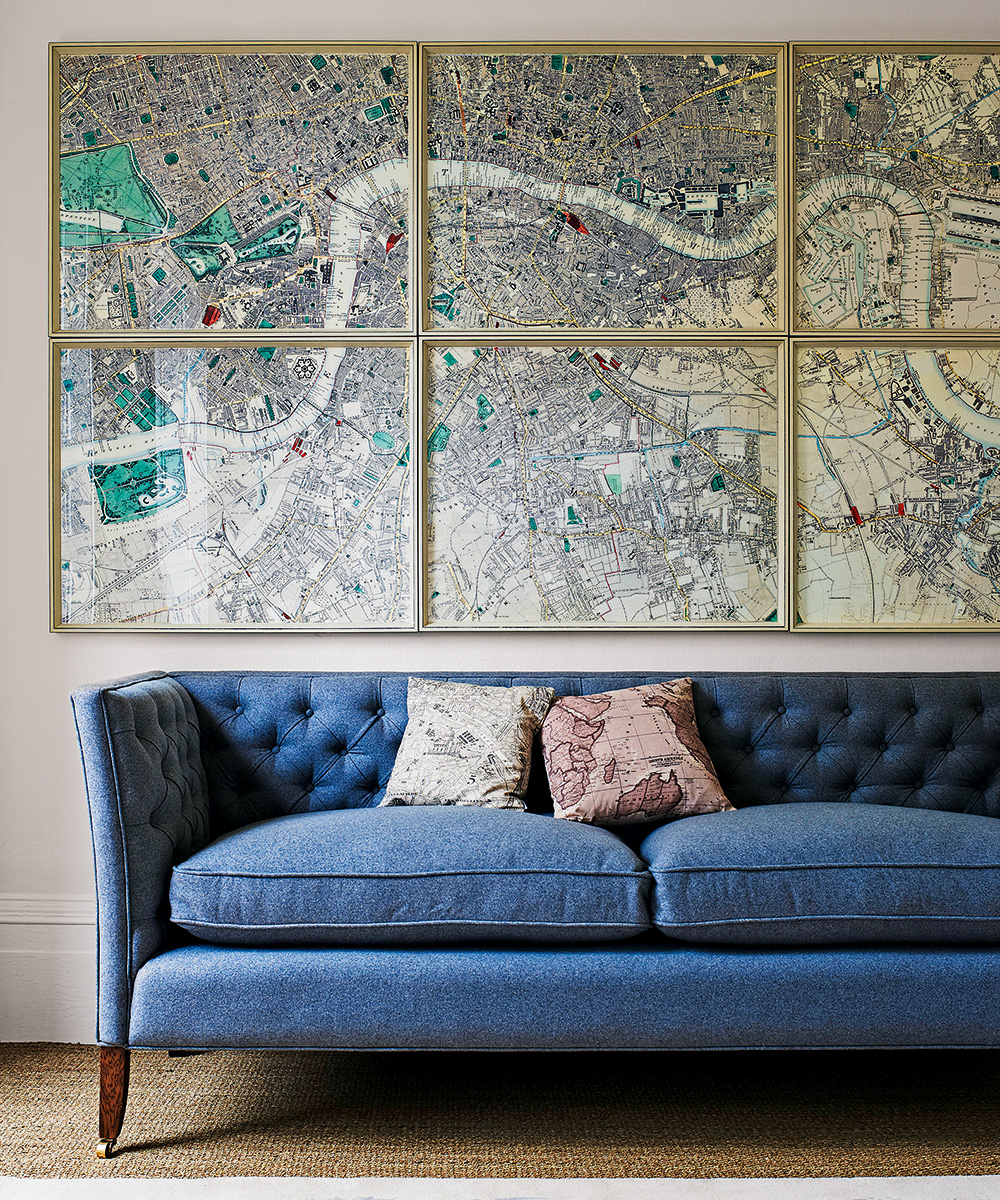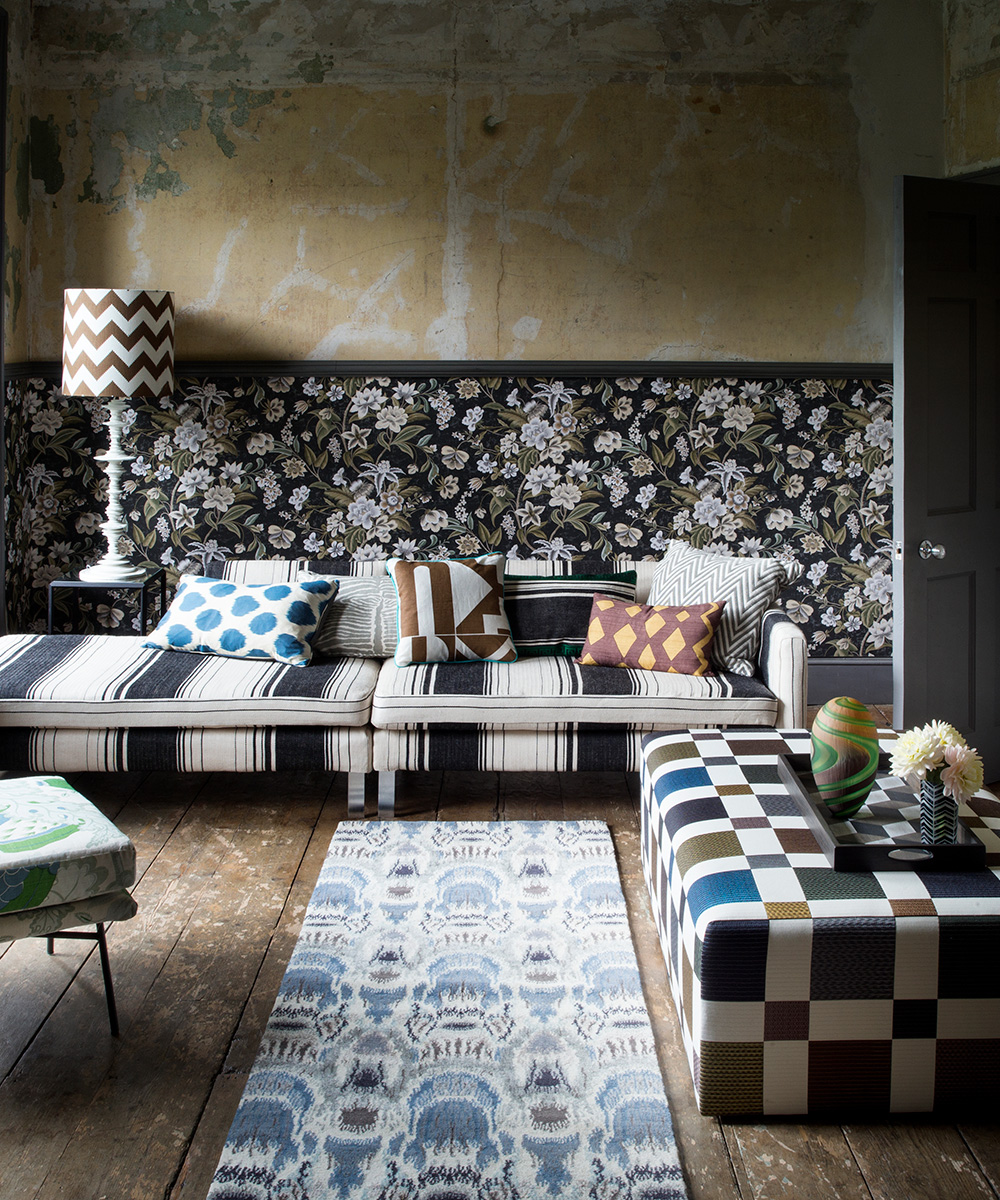Statement upholstery to lend distinctive character to your home
From classic linens and cottons to luxurious velvets and antique fabrics, the choices are limitless when it comes to beautifully upholstered furniture.

Anyone who can recall the standard three-piece suite of the 1970s will know that British upholstery has come a long way. Just a few decades ago, the average sofa showroom was dominated by bulky, space-guzzling seating with the trusty Knoll or Chesterfield being the only real option for those seeking upholstered elegance and comfort.
See our decorating section for more inspiration
Meanwhile, it was left to a minority of daring ‘modern’ householders to seek out the contemporary, low-slung seating favoured by the Continent and forward-thinking Brits like Sir Terence Conran.
Fortunately, in these design-aware times, even the most traditional of seat-makers now offer customers a choice of seating upholstery that chimes with contemporary taste and changing lifestyles.
At the cutting edge of the seating world you will find multi-functional pieces that double as pouffes, as well as sofas with adjustable backs or pull out laptop rests. And for traditionalists, trusty shapes like the wingback or tub chair are being reworked into statement pieces that cut a dash in both modern and classic settings. Add to that a dizzying array of upholstery fabrics and finishes – velvets, Kelims, linens, recycled blankets or buttery- soft leather – and it’s fair to conclude that British seating has truly undergone a design revolution.
Buttoned up
While fringing seems to have fallen from favour, buttoning is popular, both deep buttoning with pleated dips and shallow buttoning in the same or a contrasting fabric. Nailing in either antique finishes or in more modern-looking nickel is also in demand.

Subtle contrast
When it comes to finishing, we are seeing lots of self-piping or contrast piping for a smart look. Striped fabric can be self-piped and, if cut on the cross, will achieve a rope effect for added interest. Seat cushions finished without piping will create a clean, contemporary look that is currently quite in vogue.
Design expertise in your inbox – from inspiring decorating ideas and beautiful celebrity homes to practical gardening advice and shopping round-ups.

Bright stripes
This 19th-century ebonised chair has been revitalised with a bright and modern multi-coloured fabric, the effect enhanced by piping in the same fabric, but cut on the cross to create a contrast stripe. A cushion features a stripe detail to echo that of the chair fabric, its colours chosen to complement the design.

Cool contrast
Eye-catching, contemporary patterns and luxurious textural qualities are great for creating statement upholstery. Look out for bold designs, such as abstract florals or striking geometrics in vibrant yet sophisticated colours. It's important to consider the size and repeat of the pattern to make sure you get the most out of it, especially if it is largescale. Use statement pattern on simpler furniture to allow the design to be seen in its entirety across the piece so that it works to best effect.

Plumped up
Choose the cushion filling according to your personal preference. Standard European duck feather allows the cushion to hold its shape quite well, but not as well as a foam core wrapped in feather, which creates a firmer cushion that will look neater and require less puffing up after use. Pricing tends to be similar to pure feather, while a feather and down cushion can be about 15 per cent more expensive, but is sometimes preferred because it's lighter and much easier to plump up. Foam is the cheapest cushion filling, but it doesn't give the natural look of feather.

How to choose upholstery
When it comes to choosing suitable fabric for upholstery, think about how the piece of furniture will be used. For frequent use, a practical, hard-wearing fabric is important. Fabric durability is measured by a Martindale (rub) test: any fabric that achieves a Martindale test result of at least 20,000 is suitable for general domestic upholstery. Fabric companies usually display the Martindale results in pattern books, on sample swatches and on websites. Some fabrics are available with a stain-repellent or Teflon finish that protects the surface of the material from small spills.

Jennifer is the Digital Editor at Homes & Gardens, bringing years of interiors experience across the US and UK. She has worked with leading publications, blending expertise in PR, marketing, social media, commercial strategy, and e-commerce. Jennifer has covered every corner of the home – curating projects from top interior designers, sourcing celebrity properties, reviewing appliances, and delivering timely news. Now, she channels her digital skills into shaping the world’s leading interiors website.